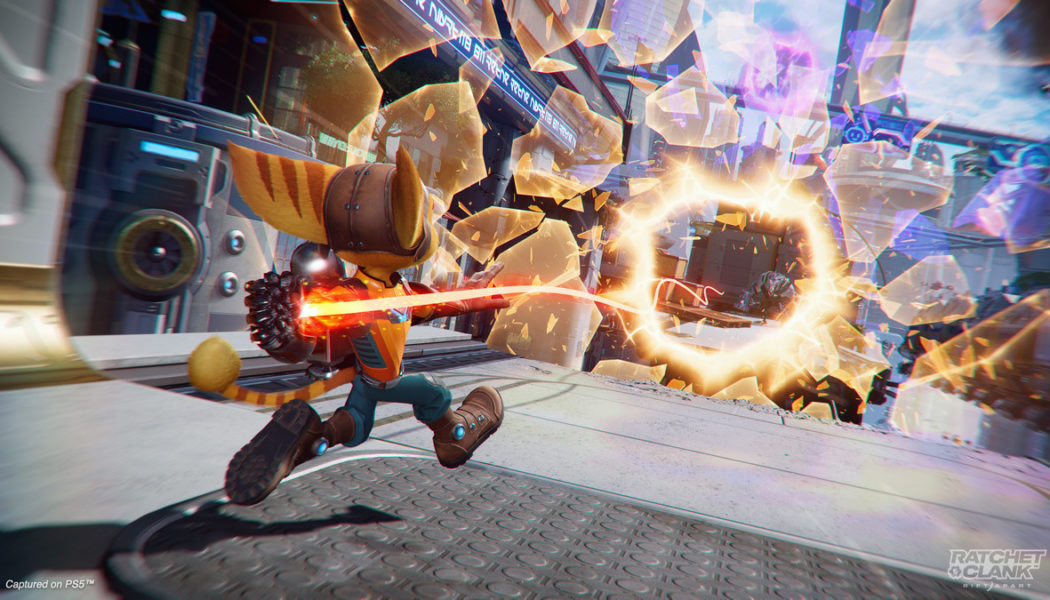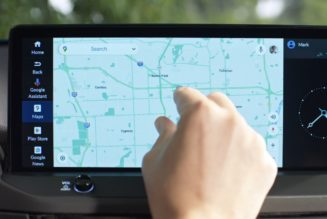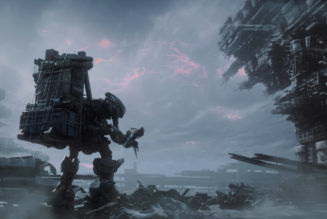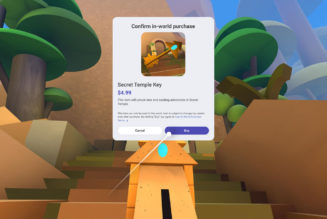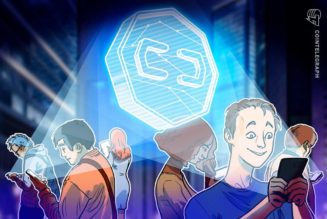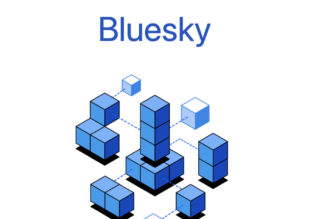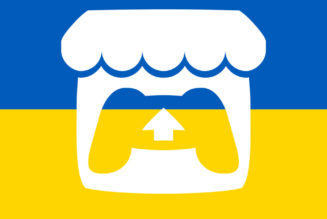We’re nearly six months into the life of the PlayStation 5, but exclusive games that really showcase the power of the hardware are still relatively rare. That’s part of what made last month’s Returnal so exciting. It’s also a big reason why the upcoming Ratchet & Clank: Rift Apart is so highly anticipated.
Ratchet has always been an incredible-looking franchise — just look at the 2016 reboot on the PS4, which was reminiscent of an animated movie — and the latest promises to offer new features only possible on Sony’s new console. It’s still a goofy shooter-platformer filled with weird gadgets, but Rift Apart also features incredibly detailed sci-fi worlds to explore and the titular “rifts” which let players instantly jump into new areas without any loading. (To see some of that in action, check out this recent, lengthy gameplay trailer.)
Ahead of the game’s launch on June 11th, I had a chance to talk to Mike Fitzgerald, core technology director at developer Insomniac Games, about the studio’s move into next-gen. He was able to get into the nitty-gritty of working on the console (in addition to Rift Apart, Insomniac has also released PS5 versions of two Spider-Man games), including some of the challenges of learning as you go. “This title is the first one where we made the content knowing it would only ever be running on the PlayStation 5,” he tells The Verge. “And so our artists would say ‘What kind of mesh density can I have?’ And I’d be like ‘… I don’t know.’ Because we didn’t have the hardware.”
Read on for our full conversation touching on what the team learned from Spider-Man, designing games with ray tracing in mind, why making realistic-looking metallic surfaces is so important, and much more.
This interview has been edited and condensed for clarity.
What were your first impressions of the PS5 when you finally learned what it was all about?
We got a briefing before seeing the hardware: “Here’s what’s coming, here’s what our priorities are going to be.” Fortunately, we have a great relationship with them — well, we weren’t a part of PlayStation then, but now we are — but we have a close relationship and got to be involved with that stuff pretty early, and that informed the game we were putting together. In that presentation in particular, I think the storage and I/O solutions really stood out to us as something that would be transformative, both in terms of development and the types of games we make.
What was that initial experience like of working on the Spider-Man games on PS5?
It was an awesome experience of peeling back layers of that hardware and realizing we need to push our engine side of things more, rather than fighting against the development hardware. The spinning hard drive of the previous gen was always a big constraint for us. Making open-world games on the PS4 is a lot of being very careful with the content you put together, how it’s packaged up, the budgets it fits under, planning ahead of time where you’re going to need to be and when.
A lot of those problems just go out the door [on the PS5], which is a big deal. It’s not just the drive itself, but it’s the hardware decompression engine around it, it’s the memory transfers that we leveraged piece by piece, more and more as we went through the project, and realized “Oh, we can make these transitions even faster, we can do them in the middle of a fight.” It was really an evolving process with the console. And it definitely came down to roadblocks in our engine that we needed to pick apart. Some of those basic assumptions of how long it takes data to get off a drive we got to rethink.
:no_upscale()/cdn.vox-cdn.com/uploads/chorus_asset/file/22507744/RACRA_Megalopolis_Rift_Tether.png)
Is your job a lot of saying “No”? An artist or designer comes to you with an idea, and, particularly on the older hardware, you have to say we just can’t do that. And how does it compare on the PS5?
Okay, probably not “Nos,” but “Yes, but…” is a common refrain. If an artist wants to accomplish something, or a designer, we try to figure out how to get there. But maybe it’s a point that the compromises are way fewer right now. Of course artists and designers also have a great sense for what the hardware can accomplish, and I think it was challenging ourselves to do new and different things now that the hardware is so different.
Given that this is the first Ratchet & Clank game you’ve worked on, what was your impression of the series? What interested you about working in this universe?
The PS4 title was gorgeous, and I think it’s been really fun to continue that march of progress from a realism perspective. This is what we did with the Spider-Man titles, and what a lot of games do. How human can your characters look? How realistic can New York City be? And then apply that same tech, and the rigor behind that tech, to a more fantastical, exaggerated animated aesthetic for the Ratchet games. That’s been fun. We have realistic materials and lighting, using ray tracing to bring more realism to it. But then we also have an alien whose entire head is an eyeball. The way the silly combines with the realistic I think brings a unique quality to the game that lets it show off the graphical techniques of the hardware.
Can you talk a bit about how you interact with other departments like art or game design? It sounds like the team is pretty collaborative.
My group is a shared group across multiple titles that we have going at the same time. Different groups within that core technology group have really close relationships with different productions. So we have some audio programmers who work really closely with the audio team, we have animation programmers who work with the animation teams, and so on and so forth. We’re pretty tightly tied in with project schedules. With projects in R&D, we let them be creative; make some mock-ups or concepts that go further than we could ever go in the engine, and then in pre-production, let’s take that and figure out how we can accomplish it and what we can put together.
So when you were working on the Spider-Man games, were you filing away ideas for things that would work well with Ratchet on PS5?
Always filing away ideas. I would even say some stuff that is essential to the Spider-Man game turned out to be cool for Ratchet, and then has some awesome quality effect on that game that we maybe wouldn’t have put in if we’d only been making Ratchet.
Do you have an example?
Spider-Man is an open-world title. We built all of this tech to stream that open world as you go through it. When you’re downtown, there’s not much Midtown in memory. You can see it from a distance, but then as you go farther north, we pull in those areas. No Ratchet game has ever been constructed that way. They’ve always been: here’s a level, load the level, now you’re in that level and you play it. But by switching over the Ratchet world to use that same streaming architecture, we can pack more and more density and content and quality in every corner of a Ratchet & Clank world, because we’re happy to ditch the west side of Nefarious City when you go to the east side, and that type of thing.
:no_upscale()/cdn.vox-cdn.com/uploads/chorus_asset/file/22507745/RACRA_NefariousCity_Bazaar.png)
Does it make it harder to know when to stop, when you have this ability to cram so much into a game? When you no longer have the same level of technical restrictions, is it harder to say “Alright, this is ready to go”?
Yes, and I would say it’s even difficult to develop the content in the first place to some extent. This title is the first one where we made the content knowing it would only ever be running on the PlayStation 5. And so our artists would say “What kind of mesh density can I have?” And I’d be like “… I don’t know.” Because we didn’t have the hardware. And we didn’t know, as the engine evolved, how the trade-offs would manifest themselves. Even once you have the hardware, it still takes you months or a year for your engine to evolve into it where you know how you want to spend your frame budget, what you do on the GPU versus the CPU, all that kind of stuff. For this game in particular, I would say we kind of just let our artists go wild and make some incredibly detailed objects and models and textures, and then gave ourselves the challenge to make it all run well.
Obviously ray tracing is a big buzzword right now, but when you’re making a game knowing from the beginning that it’s going to be supported, does that change how you approach things like art or level design?
For the Spider-Man games, it was a lot of “This looks really cool, this will have a great effect on the buildings in the city.” That kind of thing. We had a lot of content that was in the first Spider-Man game that wasn’t necessarily authored to show that feature off, but we knew that it would be in Ratchet & Clank from pretty early on. One thing it does is, the artists know to put a lot of care into the material properties that they author. So this is a metal and it behaves this way, and all of those physical material properties, so when it comes together it fits nicely when ray tracing is turned on.
:no_upscale()/cdn.vox-cdn.com/uploads/chorus_asset/file/22507746/RACRA_Parade_Float_Combat.png)
There are some big, obvious features we can see in terms of the benefits of the PS5, like the fast load times or the rifts that pull you into a parallel world immediately. But are there any examples of smaller, less obvious things that are cool or that you’re really proud of that wouldn’t have been possible on the PS4?
With the SSD, it’s easy to say there are no load times, and look how fast we can load this other area, but it has all sorts of knock-on effects. We don’t need to be as careful with how we package our data. All of the assets for an area don’t need to be collated on the spinning hard drive to get the right streaming speed out of it. It makes the game smaller on your hard drive; it means we can patch it more easily. That’s a nice bonus. We unload the things literally behind you from a camera perspective. If you spun the camera around, we could load them before you see that. That lets us devote all of our system memory to the stuff in front of you right now, that you need to experience in that moment.
The ray tracing is nice and shiny — well, literally shiny — and it’s very obvious when it’s working. But it does have a really subtle effect on the materials. There’s a part where you’re in the spaceship with Rivet and Clank, for example, and you’re not actually looking at a reflective surface per se, but just all of the metal things in that cabin, which are all curved in different ways, are all showing the effect of those characters shifting position in a realistic way. It takes us a long way toward getting the same feeling of an animated film. The way things are grounded in the environments, the way they’re animating with each other, helps us close that gap.
Is that the goal? To have it look like a high-quality animated film?
Certainly for this title, from a rendering quality perspective, we would love to be delivering stories in the same way that those films deliver stories, and having that emotional effect for players. I think between the performance capture we do know, the detail and density of the animation rigs that we have, we can tell some really good stories that I think can hit in the same way that the films hit.
Now that you’ve spent some time with the PS5, and the studio has made three games for it, what are some aspects where you’re excited to see where it goes in the future? Some feature where you can’t wait to see how Insomniac or other studios will be able to exploit it for future games. What do you think is the thing people will really be able to dig into?
Behind the scenes, there’s so much to peel back about the SSD and the I/O around it. We’re just scratching the surface of it. As a developer, that will be really cool to see how it turns out. I love seeing what the other internal PlayStation studios are doing, we have an awesome relationship with them. We don’t show each other everything all the time, so we still get that fun surprise and delight when we see what they’re doing and get to marvel at how good it looks… and then try to pick it apart and see how to do better.
